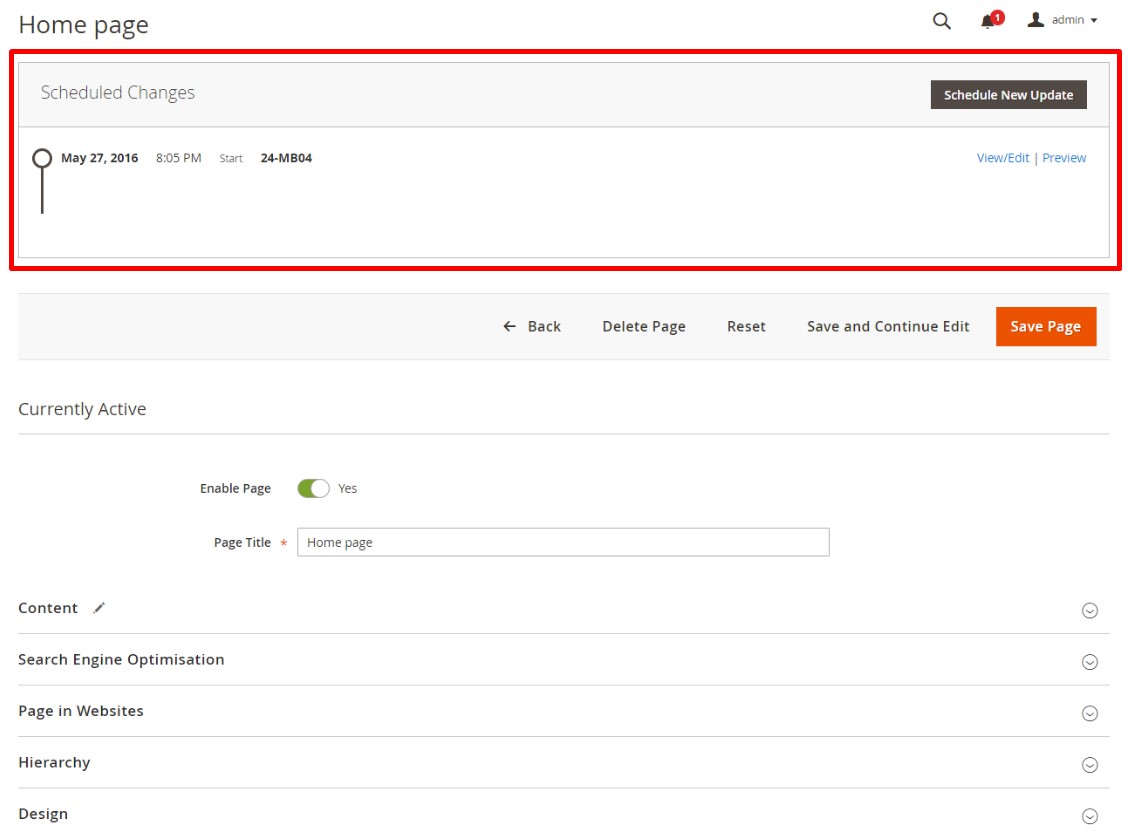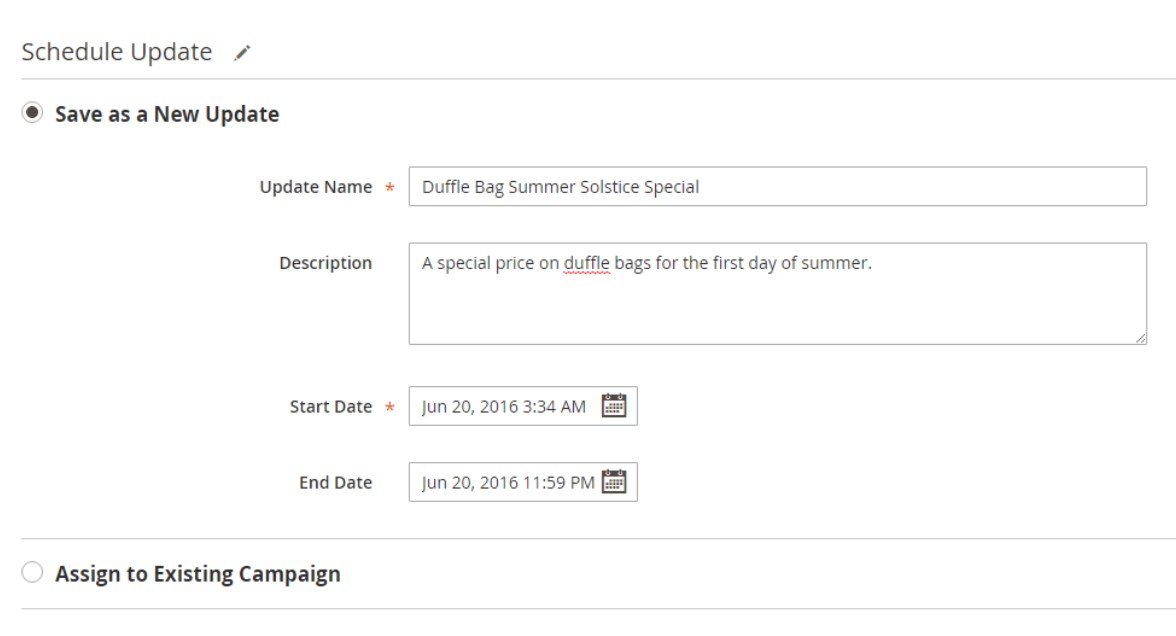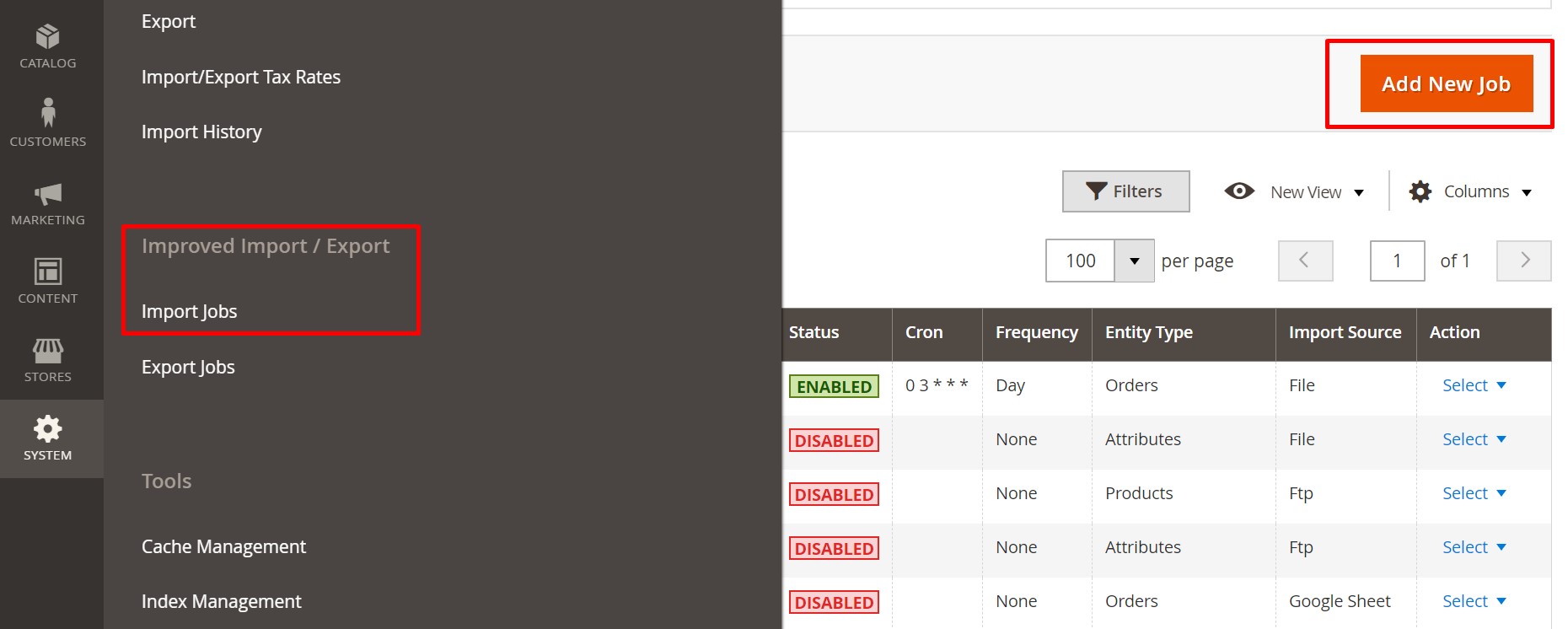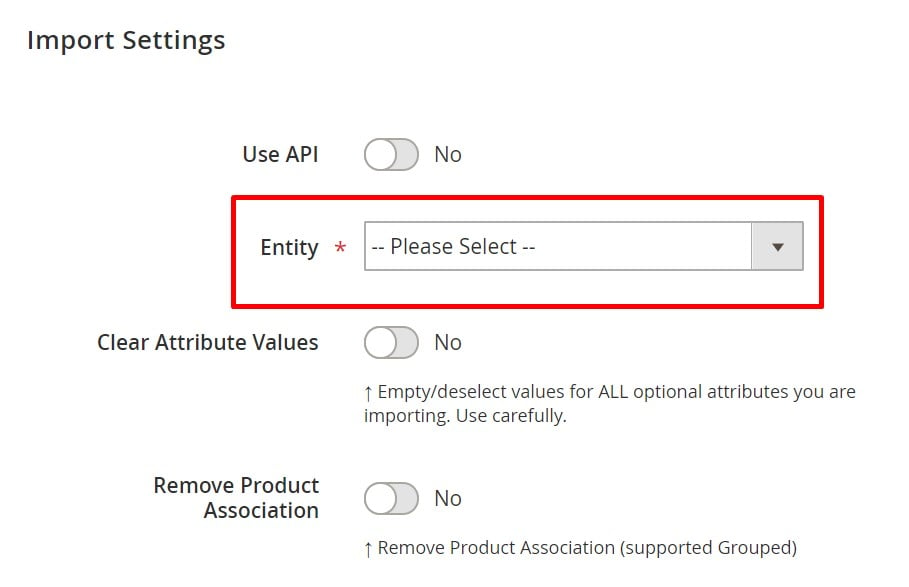How to Import and Export Magento 2 Content Staging Data

With every new update, Magento 2 gets lots of user-friendly improvements. And now, it offers the ability to make every static store page vivid due to the Content Staging functionality. Below, we shed light on a new feature as well as describe how to import and export Magento 2 Content Staging data.

Table of contents
Magento 2 Content Staging Basics
With the Magento 2 Content Staging functionality, you can effortlessly create, preview, and schedule various content updates. The new instruments of control are available right in the Magento admin, where every static page can be turned into a dynamic one providing visitors with constantly changing experience on the basis of a schedule. And it is possible to alternate not only its visual appearance but also price rules and other similar aspects.
With Content Staging, you can easily turn a page into a collection of different elements that can be turned on or off whenever you need. And due to schedules, all the changes are applied automatically! It is a handy feature for stores that use different designs for various holidays such as Halloween or Black Friday or offer price changes depending on a season.

The key element behind Content Staging is “campaign.” The term describes a record of a scheduled change and a collection of changes. You can view them on a calendar or timeline. All further improvements are applied via Staging Dashboard which is an integral part of your Magento 2 admin. Other two important terms are “scheduled change” and “scheduled update” – which are synonyms.
But how are changes applied? Let’s assume that you’ve scheduled a content change for a specific period. When the update expires, the original version of a page is displayed automatically. Thus, you can have the main design and lots of scheduled changes – Magento 2 lets you generate multiple versions of updates.
Note that all content versions are visible in the admin. Step back through the timeline to view them. As for drafts, you can save any update as them. It is only necessary to assign a far future date to it so that it will never go into production.
The algorithm behind Magento 2 Content Staging is quite simple: you create the necessary quantity of content assets, set up a corresponding campaign as a placeholder, and apply other changes via the Scheduled Changes box. Note that there is only a start date related to placeholder campaigns. Any update can be scheduled as a part of a campaign. Next, you can preview and apply them. Share changes by the following three parameters: date, time, store view.
Another vital aspect of Staging Dashboard is the ability to provide visibility into all planned site changes and updates that can be easily shared between your team members.
And this is how the Content Staging dashboard looks:

Supported Content Types
Magento 2 Commerce Content Staging lets you apply changes to the following content types:
- Products. Use schedules to apply product updates. Groupe them with other content changes. Create new campaigns on the basis of scheduled product changes or edit existing campaigns.
- Categories. The basics behind the content type are the same as we’ve just described.
- Catalog Price Rules. Everything is similar to the previous types of content, but you can apply Priority settings to multiple price rules running in the same campaign
- Cart Price Rules. Everything is just the same when it comes to cart price rules.
- CMS Pages. Everything works as in case of products.
- CMS Blocks. There is no need to write any code to create CMS blocks and assign them to a specific time and place in the layout. Blocks can include various content type. Note that they are heavily used on homepages.
- Widgets. Create and schedule widgets with Content Staging. Display a wide range of content changing its appearance automatically.
Content Staging Workflow
Let’s explore how to work with Content Staging in more detail. First of all, you need to create the baseline content. It is your basic page look that is used every time between campaigns.
Next, you should create the first campaign. Specify its start and end dates or make the campaign open-ended. Leave the End Date field blank, and this particular campaign will be displayed forever. Otherwise, the original baseline content will be restored after the expiration.
As mentioned above, you can add an unlimited number of campaigns, so it is time to create the second one. Assign it to a different period and don’t forget that multiple campaigns for the same asset cannot overlap.
Note that the baseline content is restored whenever an active campaign ends, but it can be replaced with a new update automatically.
How to Schedule Product Page Update with Magento 2 Commerce Content Staging
To schedule an update to a product you have to go to the Catalog grid and open a product in the edit mode. There is the Scheduled Changes box at the top of the page. Find the Schedule New Update option and tap it.

- Add a new name for the content staging campaign;
- Enter a brief description;
- Use the Calendar to choose both Start and End dates.
Leave the End Date field blank to create an open-ended campaign, but note that an end date cannot be added to a price rule campaign later.
Next, apply changes you want to display with this campaign to the product page. You can save the update as new or assign it to an existing campaign.

To edit the scheduled change, use the View/Edit option in the Scheduled Changes. Apply changes and tap Save.

To preview the campaign use the appropriate option of the Scheduled Changes box. Note that the Preview opens a new browser tab.

You can also use the Calendar option in the upper-left corner of the Preview window to see other campaigns that are scheduled for the same day.

Another essential aspect of Content Staging is the ability to share every scheduled update. To do so, tap Share and copy the link to the clipboard. Now, you can paste the link to your colleagues.

For further information, check this article in the Magento 2 User Guide: .
How to Import And Export Magento 2 Content Staging Data

Unfortunately, you cannot just import or export Content Staging data with the help of the default Magento tools, but there are lots of third-party modules that enhance the default platform functionality. Since it has always been challenging to find a reliable import/export extension that satisfies all business needs, we’ve done the research for you. Not only Magento prevents the Content Staging data import and export, but there are also other barriers that separate you from seamless integrations:
- Most tools are limited to the import or export process correspondingly;
- Some extensions can transfer a limited number of entities;
- Many import and export modules lack such features as mapping or automation.
Considering all these and multiple other drawbacks we’ve decided to develop our solution that provides an enhanced experience. Meet the Improved Import & Export Magento 2 extension – your number one time-saver for all import and export tasks. The module allows moving most Magento 2 entities including Content Staging data.
To import Magento 2 Content Staging Data, follow these steps:
- Go to System -> Improved Import / Export -> Import Jobs and hit the Add New Job button.

- Configure General Settings and proceed to the Import Settings section. Here, you can select Content Staging Data among options of the Entity drop-down.

- When the job is configured, save it and run the update.
As for the Magento 2 Content Staging data export, the process is entirely the same. You can configure it under System -> Improved Import / Export -> Export Jobs.
Get Improved Import & Export Magento 2 Extension
Final Words
Magento 2 offers lots of user-oriented improvements including the Content Staging functionality which helps you turn every static page into a dynamic experience that changes according to your plan. However, the platform doesn’t let you import and export the corresponding data. If you migrate from one store to another, you will never transfer Content Staging data using the default Magento 2 tools. Luckily, there is the Improved Import & Export Magento 2 Extension which allows moving the corresponding entity between Magento and external systems. For further information, follow the link below and contact our support:
Get Improved Import & Export Magento 2 Extension
Not sure how to import specific data types into Magento 2? Our guide covers everything — from products and customers to CMS pages and B2B entities.
👉 Browse all Magento 2 import topics

